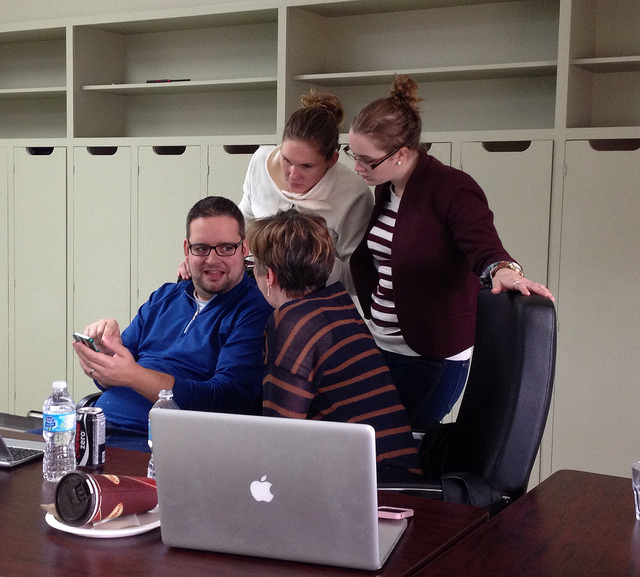Some Simple Changes for Dramatic Gains
We’ll never see big changes in student learning without considering big changes to teacher learning

If you took a random sample of students and asked them what they think of school, you’ll get a wide variety of answers. Some may say they like it, a few might love it, many more might likely say it’s boring and a few more even say it sucks. When you ask most teachers what the term “professional development” means to them, you’re likely to receive a very similar set of responses.

If you took a random sample of students and asked them what they think of school, you’ll get a wide variety of answers. Some may say they like it, a few might love it, many more might likely say it’s boring and a few more even say it sucks. When you ask most teachers what the term “professional development” means to them, you’re likely to receive a very similar set of responses.
In most cases the term PD, connotes the notion of experts training teachers in some new initiative, concept or skill. While we know it occurs in many forms, the idea of “expert trainer” remains for most, the default experience. Teachers are allotted a specific number of PD days and while expectations from districts and schools may be high, teachers know that two or three days a year is never going to be enough to impact real change. While many districts are recognizing this problem, not many are addressing it very well.
I’m fortunate enough to have travelled and worked in districts across Canada and have seen some bold attempts – and many more failed attempts – at attacking this issue. I think there are several problems and here are a few that I think are fairly universal.
Language: Even though “professional development” is a much better term than “training” it still creates a stigma by suggesting that it’s some kind of event, limited by time and space. While I prefer “professional learning”, I think simply calling it “learning” would be best. If you ask a teacher about their PD, most will point to things the district or school is asking them to do or offering them. If instead, we start asking, “what are you learning”?, it immediately takes away the limitations and expectations that someone else will be providing it and suggests it’s in the hands of the learner.
It’s Too Complicated. I believe there are only two things that teachers need to do when it comes to their PD. They need to learn something and then share it. That’s it. In the same way that great classroom teachers allow their students to share their learning in a variety of ways, we need to ask teachers to do the same. In many cases, paperwork and strict formats are sucking the life out of PD. In addition, as professionals, they need to decide what they need to learn. That said, district and schools should be offering leadership, direction and support in this but ultimately teachers should decide what they need to learn. This can also be considered differentiation. In the same way we ask students to direct their learning, as adults and professionals, teachers should have even greater autonomy. The worry is, “what if they learn something we don’t want them to learn”? That’s why creating cultures of sharing becomes the accountability we’ve often implemented through paperwork and top-down initiatives. Learn and share. If all teachers were expected to learn and were provided the means to share, I would argue the impact of PD would be significantly greater.
It’s Done To Them. Perhaps not all, but much of learning should be self-directed. Adults should be able to choose and design many of those experiences. From a reading a book, to choosing a class or conference, participating in a twitter chat, or collaborating and co-planning with colleagues, this responsibility should be given to the learner. The design of these experiences need not require a great deal of preparation. Districts and schools often spend countless hours trying to provide great learning experiences when often they should be asking the teachers to provide these for themselves. With today’s myriad of opportunities and options, there’s no reason why any teacher should go without a rich learning life. Again, districts should be supportive and act as facilitators and guides but need not determine every detail of a teacher’s professional learning experience.
I don’t mean to be trite and certainly recognize my ideas represent a big shift for some. As we see a clear shift to a more student-centered learning experience in our schools, we have to make the same thing happen for teacher learning. Teachers need to build on their strengths while acknowledging their weaknesses. Teachers need to have choice and voice. The greatest difference between teachers and students is that they are adults and they are professionals and should be treated as such. This also means teachers have to be actively seeking new learning and not waiting for others to provide it for them.
As much as I believe in teacher autonomy, I do believe the non-negotiable is that teachers have to be learners and the learning needs to be intentional and visible. We’ll never see big changes in student learning without considering big changes to teacher learning. In both cases it requires giving up some control. For some, this is still the biggest hurdle.
This blog post is part of CEA’s focus on the state of Teacher PD in Canada, which is also connected to Education Canada Magazine’s Teachers as Learners theme issue and The Facts on Education fact sheet, What is Effective Teacher Professional Development? Please contact info@cea-ace.ca if you would like to contribute a blog post to this series.
